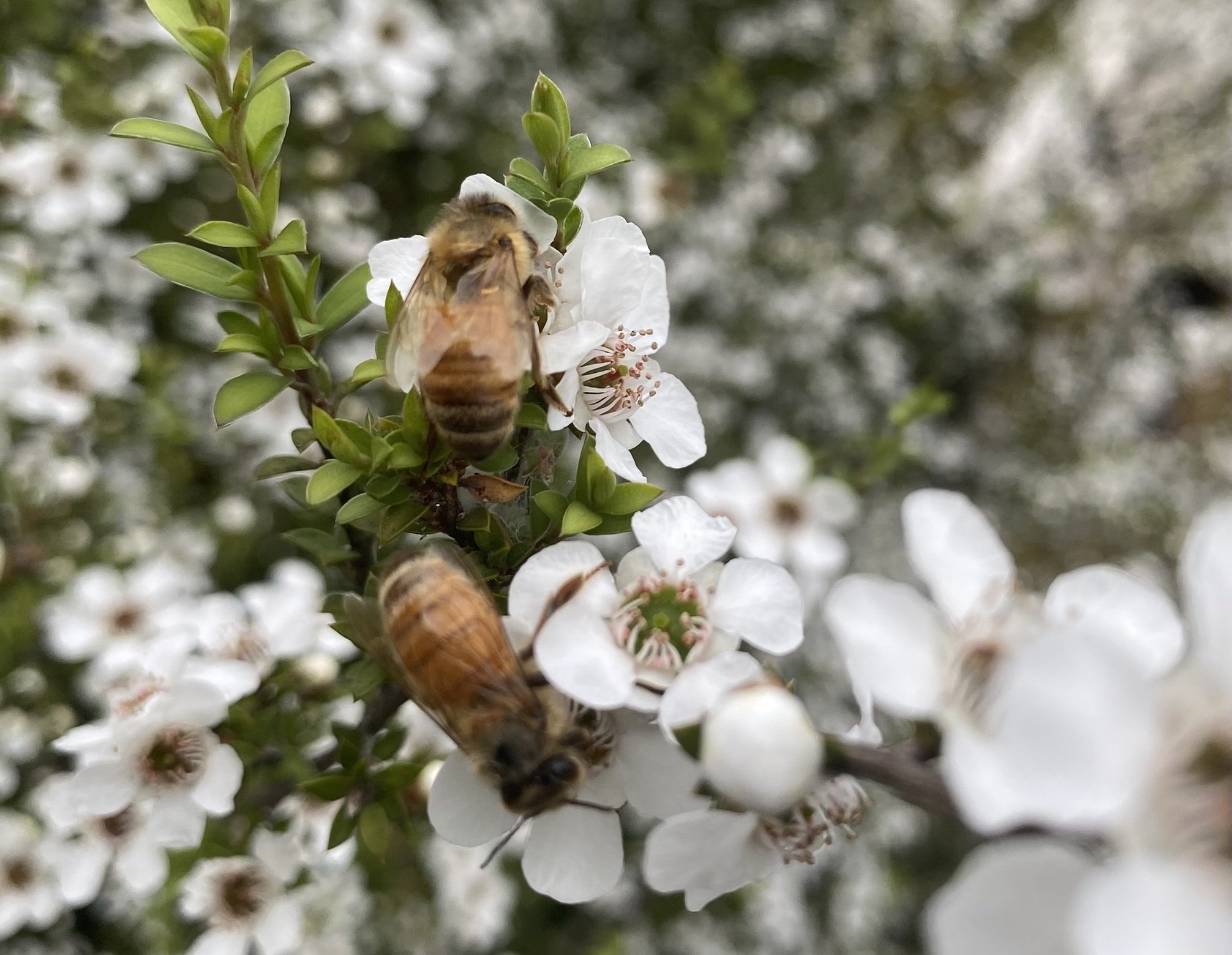
Mānuka
Nature’s treasure
Traditionally New Zealand’s Māori peoples used Mānuka as rongoā (medicinal plants) for its healing ability and therapy. Increasingly it appears that Mānuka has enormous potential in solving new health problems, see the latest research.
All three varieties of coloured flower: red, pink and white, were used traditionally by Māori and all have healing properties.
During World War II infections from wounds necessitated the development of penicillin as the forerunner to modern antibiotics to treat many global diseases, but a major problem has arisen as bacteria are continually mutating to become antibiotic resistant. Mānuka offers a solution to MRSA (methicillin-resistant Staphylococcus aureus) resistant to antibiotics and is now being recognised to have bacterial properties and can promote effective wound healing.
What makes Mānuka so special?
For thousands of years, all kinds of honey were used as a medical treatment before antibiotics became common. All honey (particularly raw honey) can have antibacterial activity due to hydrogen peroxide that occurs naturally in honey, however, only some have non-peroxide activity.
Non-peroxide activity (NPA)
Researchers from the New Zealand University of Waikato discovered in 1981 that even after the hydrogen peroxide in Mānuka honey was neutralised, it still exhibited strong antibacterial activity. This antibacterial activity is referred to as non-peroxide activity (NPA), and is unique to Mānuka honey making is so highly prized.
Why is NPA important?
Hydrogen peroxide degrades quickly in the human body or when exposed to open wounds. Mānuka’s NPA activity does not degrade like hydrogen peroxide, making it significantly more effective for medicinal and health use. Read about the seven benefits of Mānuka.
NPA is the unique behaviour of Mānuka honey which is the result received when the honey is tested , while Methylglyoxal (MGO) is the organically occurring compound in Mānuka honey that is understood to be primarily responsible for its unique antibacterial activity.
Confused about NPA, UMF, MGO, K Factor etc?
The NPA marker relates directly to the overall UMF rating. If a Mānuka honey has an NPA of 18 then it will be UMF 18+. Similar to MGO, the better the purity and quality of the Mānuka honey the bigger the MGO.
There are many other rating systems, however, the only true measures relate to NPA/UMF and MGO. For instance ‘K Factor’ simply states if the honey is a multi-floral Mānuka honey ‘K Factor 12’, or a Monofloral Mānuka honey ‘K Factor 16’, in this instance the numbers have no indication of antibacterial strength is varified.



